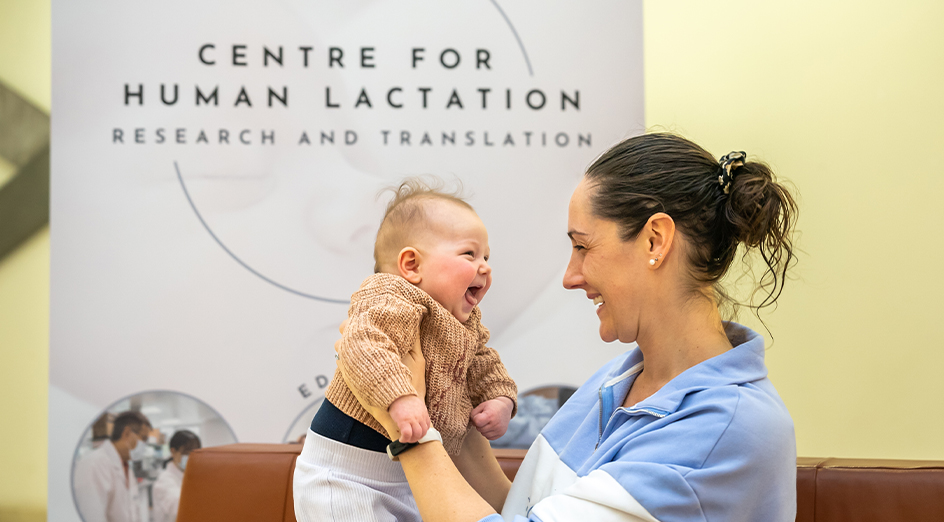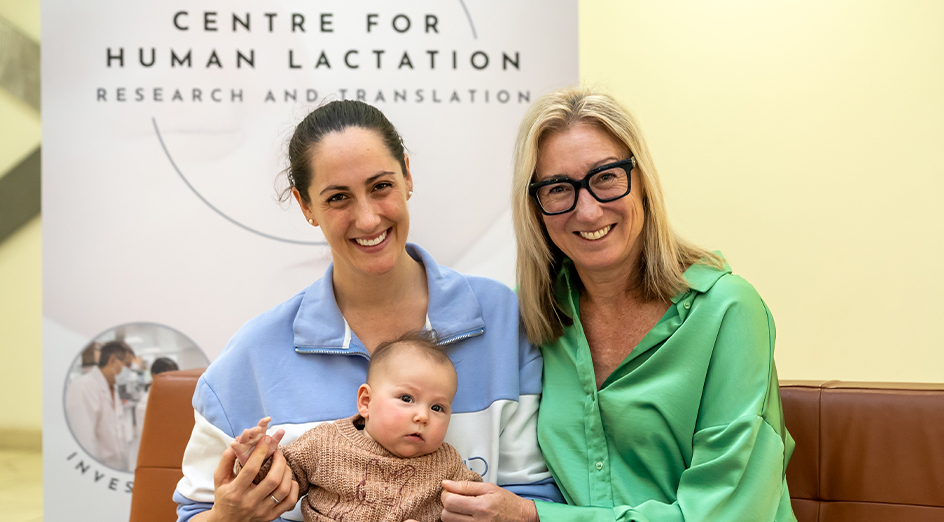In celebration of World Breastfeeding Week (August 1-7) researchers at The University of Western Australia have highlighted the critical role of antenatal screening in supporting breastfeeding mothers.
The UWA Centre for Human Lactation Research and Translation has conducted trials on a new screening test to identify lactation risk factors in expectant and new mothers and assess the impact of these risks on breastfeeding success in the first two months following the birth of their babies.
Centre Director Professor Donna Geddes said perceived low milk supply was a common reason for new mothers to supplement with formula or stop breastfeeding altogether.
“Since the beginning of time, women have worried about making enough milk for their babies and their concerns have continually been swept under the carpet, but finally the tide is turning as legitimate reasons for low milk production are being uncovered by our research,” Professor Geddes said.
She said a team of researchers and clinicians was involved in developing a simple five-minute clinical assessment of women in pregnancy that identified who’s at risk of not making enough milk.
In collaboration with Western Obstetrics the team conducted a retrospective exploratory analysis which examined data gathered from the screening tool from more than 500 women who intended to breastfeed.
Director of Western Obstetrics Dr Stuart Prosser said more than half the participants had at least one lactation risk factor, such as a high pre-pregnancy body mass index, a history of breast surgery, or gestational diabetes, all of which were associated with a higher likelihood of not fully breastfeeding at six to eight weeks postpartum.
“Women with no risk factors had a 77 per cent rate of full breastfeeding at six-to-eight weeks, those with one risk factor had a 60 per cent rate, while pre-pregnancy obesity combined with gestational diabetes or polycystic ovary syndrome more than doubled the risk of not fully breastfeeding,” Dr Prosser said.
Osborne Park mother-of-two and neonatal care nurse Heidi Thomson learnt firsthand the impact of the risk factors after the birth of her first child Calvin just over two years ago.

Image: Heidi Thomson with her second child, daughter Brooke.
“I was involved in the screening test trial and it was picked up that I had one of the risk factors, polycystic ovary syndrome, and that I might have a low supply of milk,” Heidi said.
“Finding out early meant I knew what to expect and I was able to reach out and get support and education around how to handle that, such as responding to Calvin’s needs and providing him with comfort and nourishment as often as he required.
“By feeding on demand and offering the second breast, my milk flow increased and I was able to breastfeed Calvin until he was 18 months old – the confidence I gained made everything so much easier with my second child Brooke.”
Lead clinical researcher Dr Sharon Perrella said by identifying risk factors early, targeted proactive education and the necessary support to help mothers overcome challenges and successfully breastfeed their infants could be provided.
“Empowering women to fully or partially breastfeed for as long as they like without exhaustion and, more importantly, guilt, translates to healthier mothers, babies, and families,” Dr Perrella said.
The positive results mean the team is preparing to scale up the use of the clinical assessment with multiple health providers while also developing a version for mothers of preterm infants with Western Australian stakeholders.
The preliminary results of the study were published in .

Image: Heidi and Brooke with Professor Donna Geddes.







